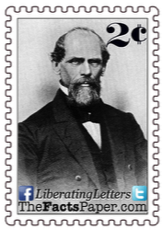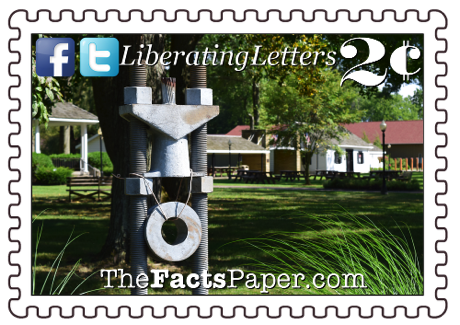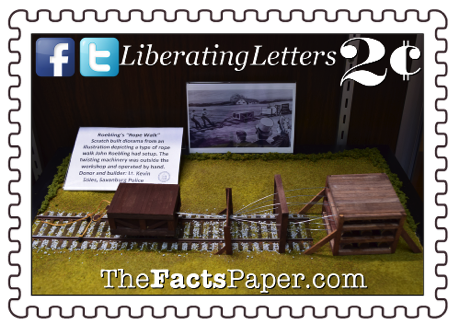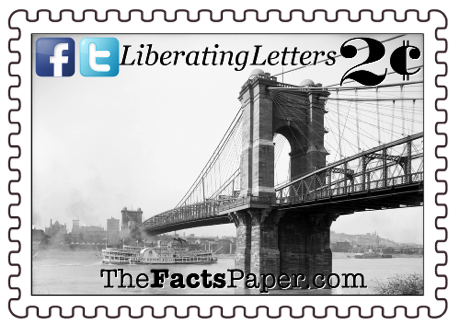The heavy, bulky reels were taken to Freeport ten miles away by horse and wagon, to be transported by canal back east. Roebling quickly patented his invention as the calls for his rope increased. While the Saxonburg residents worked diligently to meet the demands for the new wire rope, the process was cumbersome and time consuming, even with the wrapping machine he designed for the task.
Now that Roebling had tasted true freedom, he never wanted to be a slave to any institution again. Therefore, he refused to borrow money for his industry. Instead, he practiced strict, capitalistic principles, conducting business with earned and saved finances. Roebling was so confident in his invention that he convinced the Pennsylvania Canal board to allow him to install his iron rope in their structures. He even offered to install a demonstration at his own expense. Hemp manufactures successfully sabotaged his efforts by cutting the rope and causing a crash. On the verge of ruin, Roebling pleaded to John Butler, the canal commission president, for another chance. When it was granted, Roebling declared, “God is good!” before conducting a successful test of his wire and winning the contract.
Roebling continued to expand his business and reputation by installing his iron wire rope on canals and aqueducts. Soon, he was designing and building suspension bridges as well. He was not about to squander the opportunity he had been given by his new country. Nor was he going to take it for granted.
By 1849, Roebling’s business, both wire production and construction, had broadened beyond financial viability in Saxonburg. As a result, Roebling left his beloved village and built a factory in Trenton, New Jersey, where in 1855, he designed a vertical-spinning machine which not only replaced the long rope-walk, it allowed for quicker, automated production. This, along with access to waterways and the ocean, opened opportunities he only once dreamed of.
Shortly after moving to Trenton, Roebling sustained a debilitating injury. His left hand was caught in a machine, which lacerated tendons and permanently disfigured fingers. Therefore, 20-year-old Washington became his father’s secretary, beginning a lifelong partnership between the father and son duo.
Once recovered, Roebling returned to work, building several suspension aqueducts in the east. However, it was the first railway suspension bridge over Niagara Falls that brought Roebling international fame. He was soon summoned to Kentucky to work on two bridges, one being the Covington-Cincinnati Bridge, which he started in 1856. However, many Southerners rejected the project, fearing it would encourage and assist runaway slaves, a fact which only inspired Roebling all the more to complete the project.
At the time he started construction, the country was already in political turmoil. The Republican Party recently emerged as a result of the Kansas-Nebraska Act (see The Birth Of A Movement, Sibling Rivalry, and Charting A New Course). The Dred Scott Decision of 1857 (see Dreadful Scott Decision), a result of a ruling by the seven Democrat justices verses the two Republican justices, infuriated Northern Republicans, such as the Roeblings. That year also brought a financial crisis that halted both of Roebling’s Kentucky bridge projects.
Roebling continued working, completing a suspension bridge in Pittsburgh in 1859. However, when the Civil War broke out in 1861, he and Washington contributed to President Abraham Lincoln’s Union cause. Roebling donated $100,000 while Washington donated his time and talents. Washington enlisted with the Union forces, building several key suspension bridges for the North during the conflict as well as fighting in the Battle on Gettysburg. (see The Unforgettable Address) He proved to be a valuable asset to Lincoln’s Army, concluding his service with the rank of colonel.
In 1863, construction resumed on the Covington-Cincinnati Bridge (renamed the John A. Roebling Suspension Bridge), which was completed in 1867, 150 years ago this summer. That same year, Roebling began designing the Brooklyn Bridge in New York City, which resembled an enlarged Covington-Cincinnati Bridge. On June 28, 1869, Roebling was examining the area at Fulton Ferry for the location of the bridge. While standing on the edge of a dock, an arriving ferry crushed his foot. Several toes were amputated, but he dismissed all further medical treatment, insisting on using “water therapy”, a process of constant water on the wound. Within weeks he developed tetanus and lockjaw, which took his life on July 22, 1869. Washington Roebling took over the construction of the bridge, however, out of necessity his bride, Emily Warren Roebling, jumped into the management role after Washington contracted the bends. He watched construction from his apartment window as Emily relayed his instructions as well as supervised construction decisions from her own knowledge of bridge building. Her valuable involvement granted her the first walk across the bridge upon its completion in 1883.
Liberty, legal immigration of those desiring an opportunity is the backbone of this country. (see Coming To America) When the Roebling brothers stepped on that boat, they did not do it because they wanted to take from Americans, or force their culture on those already here. Instead, they wanted a chance to prove themselves, without an over-bloated government standing in their way. Roebling didn’t want to hide in the shadows, nor did he want anything handed to him. He just wanted the opportunity to make America great. Which is exactly what he did.
Roebling’s Trenton, New Jersey, company was run by four generations of Roeblings, providing their innovative wire rope for other bridges, such as the Golden Gate and George Washington Bridges. The Wright Brothers used Roebling trusses to stabilize the wing wires, while the Spirit of St. Louis used Roebling wire for the control cables. (see I Believe I Can Fly) Others used Roebling iron, steel, and copper wire rope in elevators, cable cars, telephones, telegraphs, electricity, mining, and oil drilling. It was even utilized in the construction of the Panama Canal.
It is quite sad we have politicians in both parties catering to illegal immigrants, promising them so-called freedom in the form of free food, free housing and free income, all for the purpose of getting votes so as to stay in power. Government offices and industries all over the country are changing signs, forms, and official documents to the language of these illegal immigrants. All of this would have outraged Roebling, who believed perseverance, assimilation and good old fashioned hard work was the key to success. The current political movement is destroying America by not allowing those coming here to even begin to tap into their potential, instead only to tap into the wealth of the American people. This only sets the immigrants and America up for failure. But the politicians don’t care. All they want is the check in the correct box on Election Day.
Liberty, you have deep roots in Saxonburg and the surrounding area, including the DNA of the above mentioned Christian Rudert. You aren’t directly connected to Roebling, but his spirit, his determination, and his drive lives in your veins. Many of your ancestors knew, worked with and were inspired by Roebling, living by his same principles and character. He wasn’t given citizenship, he earned it. And afterwards, he did everything he could be make himself, his family and his new country the best it could be. It is that liberating mindset that inspired Roebling to come to America in the first place.
That’s my 2 cents.
Love,
Mom
October 28, 2017
Dear Liberty,
Johann was 25 years old when he and his older brother, Frederick Charles “Carl”, stood at the railing, straining to see the shores of their new home. Their mother did everything to afford to send Johann to Erfurt and Berlin at age 15 to study with the most esteemed professors of mathematics, architecture, engineering and hydraulics. However, the confining restraints of government limitations hindered his ability to maximize his talents. Johann had tried several times during his three years of required public service to build suspension bridges for his homeland, only to be turned down again and again. The government repeatedly declined to allow him to make his visions a reality. Therefore, the brothers learned English so they could communicate with future business partners, shook the dust of Mühlhausen, Prussia (Germany), from their feet and set their eyes on the land of opportunity - America.
The brothers boarded the August Edward on May 22, 1831, with a handful of other immigrants, including Johann Adolphus Etzler. When Johann August Röbling was born on June 6, 1806, Napoleon Bonapart was in the middle of his Napolenonic Wars, which lasted through Johann’s first decade. (see Reign Of Terror) The political void left following Napoleon’s unsuccessful bid for conquest was filled by an authoritarian government. As a result, creative and innovative engineering minds such as Johann, Carl and Etzler sought opportunity to do their work elsewhere. The trio set out with fellow countrymen to start a settlement in the New World. However, while the brothers desired freedom, Etzler had visions of a utopia. Upon reaching the United States on August 8, 1831, the Röbling brothers and Etzler decided to go their separate ways, with groups of their countrymen following each.
During his voyage to the New World, Röbling wrote in his diary he hoped “to found a new house in the western continent beyond the ocean, a new fatherland free from tyranny...guided by firm convictions and upright motives, not by the whim of the moment.”
The brothers' first task was deciding where they would build their little Lutheran village. Disgusted by slavery, they knew without a doubt it would be in a free state in the North. In his diary, Röbling noted he and the others were “frightened away from the South by the universally prevailing systems of slavery, which has too great an influence on all human relationships and militates against civilization and industry with an ever-hindering effect.”
They started out towards Pittsburgh (see Join, Or Die and Bulletproof), where they purchased 1,600 acres from Mrs. Sarah Collins on October 28, 1831. The land was located north of Pittsburgh in Jefferson Township, Butler County. The men quickly got to work designing the layout of the city in good Prussian linear fashion, while sending word back to Mühlhausen and surrounding areas for people to come join them. Main Street traveled perfectly east and west, with large plots of land for family farms. At the east end of Main Street, the village church was erected with foundational stones donated by Christian Rudert, another German settler. Services in the newly built German Evangelical Protestant Church began in 1837.
The village was first christened “Germania,” later changing to “Sachsenburg,” which eventually evolved into the anglicized version of Saxonburg. Just down from the church stood Johann Röbling’s house and workshop on property now home to the Roebling Museum and Park.
THE ORIGINAL IRON MAN

The Röblings decided they would start completely fresh, leaving their engineering careers behind in Prussia. They set their focus on farming. The village tailor, a fellow immigrant, had a daughter, Johanna Herting, who caught Johann’s eye. The couple married in 1835 and welcomed the first of nine children, Washington Röbling, in 1837. That same year, Carl died of a heatstroke and Johann became a naturalized citizen. As a result, he Americanized his name to John Augustas Roebling.
Farming soon proved unprofitable for Roebling, so he decided to raise canaries, to equal successful results. Other adventures included farming silkworms and rapeseed oil, as well as dyeing fabric. Roebling finally returned to his first love, engineering, which allowed him to travel across Pennsylvania, designing and improving canals and aqueducts. Before long, he accepted a position with the State of Pennsylvania surveying for the railroad, searching for a viable route across the Allegheny Mountains. It was a decision that would change the world.
While studying the railroad lines, Roebling noticed the hemp rope used to hoist canal boats up and down the Appalachian Mountains on railroad cars, which was the only means of getting them westward to travel on to Pittsburg. The hemp ropes wore out and needed replacing often. That is if they didn’t break first, causing multiple accidents and injuries. Recalling an article on wire rope he read back in Germany, Roebling set out to make his own version of the product. In 1841, back in his Saxonburg workshop, he began twisting his iron wire rope, making a strong, sturdy, long lasting replacement to the unreliable hemp rope. Local men worked from sun-up to sun-down stretching and twisting wires along the twenty-five hundred foot rope-walk that extended from his workshop to beyond the town church. He was a complete success. However, transporting his product became a huge hurdle.



